Variable corn stands, short hayfields, and parched pastures are par for the course with the drought this growing season. As a result, graziers are already dipping into stored winter feed, while hay supplies become increasingly limited and expensive. Annual cropping systems like corn, soybeans, and particularly wheat provide opportunities to squeeze more growing degree units out of a year when followed by cool season cover crops. Grazing cover crops can stretch stored feed and provide a low-cost alternative to feeding hay in late fall and early spring in leaner years (savings include: diesel for forage harvest and manure hauling, hours/wear on equipment, and the associated labor costs), as well as return 80% of the nutrients immediately back to the soil. There are several opportunities for cover crop establishment outside of the normal cropping calendar that can be used for grazing.
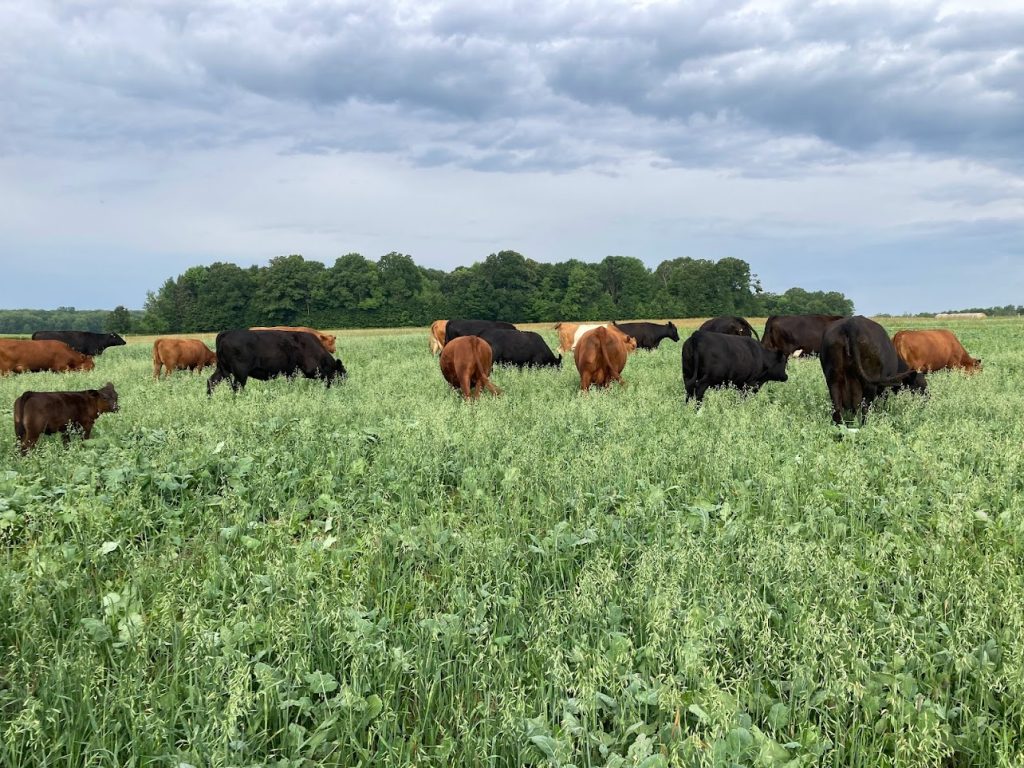
Table 1. Cover crop options for grazing following cash crops:
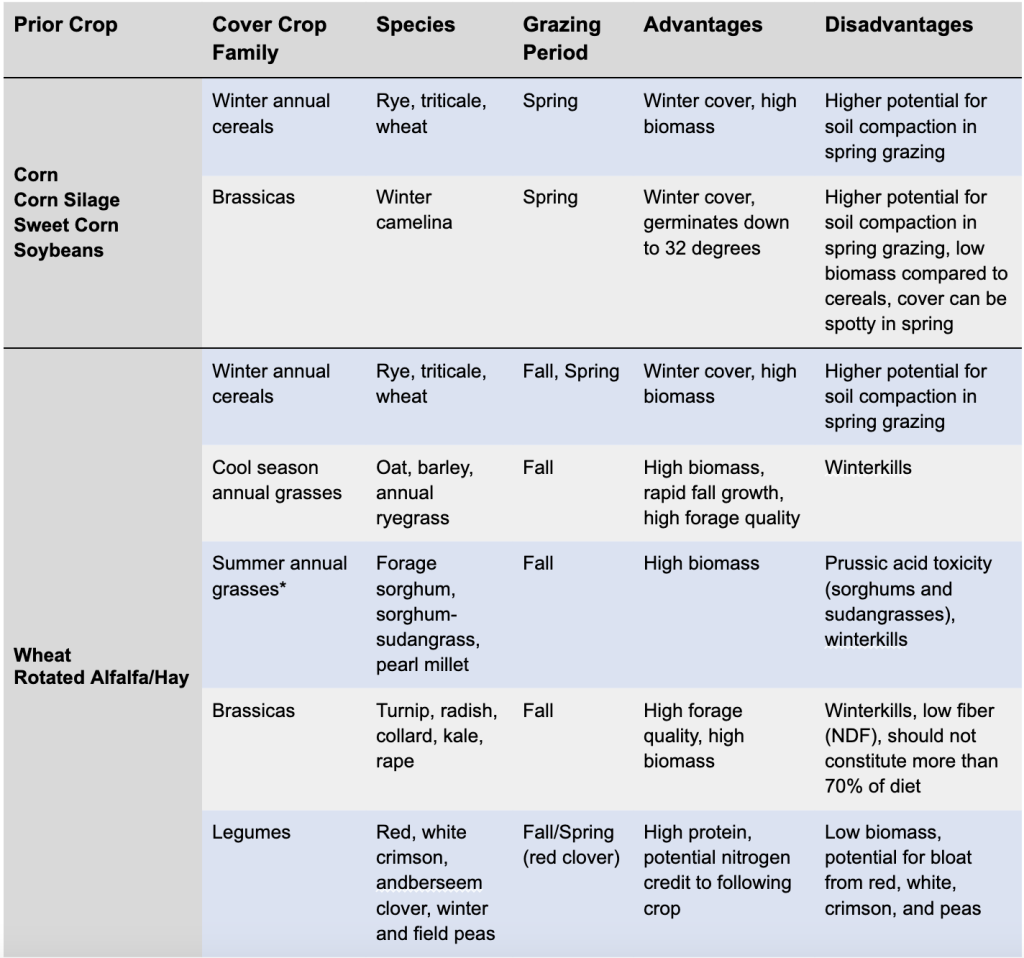
Mixtures of the above cover crops allow farmers to maximize fall growth and grow something that overwinters. They also will balance livestock diet and limit disadvantages or possible toxicities (more on that below). Overlapping cover crop establishment and cash crop growth by frost seeding small seeded legumes like red clover into growing winter wheat can help the covers get a jump start on growth after wheat harvest and not affect wheat yield. While you can usually bank on volunteer wheat to grow into the stand of red clover and provide important fiber to the lush cover, some producers will also drill in oats or rye immediately after the wheat harvest to prevent bloat.
Grazing cover crops is no entry-level practice and requires some forethought, including
Fencing – Is there a perimeter fence around the field? If not, are your animals well-trained to electric fence so you can be comfortable with a single, double strand, or net electric polywire between your animals and the highway? It may be best to stick to interior fields or less trafficked areas initially.
Water – Is there a well at the field, or will you have to truck in water? Consider the associated costs and labor. There are plenty of examples of innovative solutions to temporary watering, including troughs mounted on trailers and sleds, with or without water pipe/hose hookups.
Match cover crop species with the animal – Dietary requirements depend on the type of animal and its class. Lactating animals require higher protein content than non-lactating or dry ones, therefore covers that include legumes such as red clover may be necessary to keep up milk production.
Minimize soil disturbance – While studies have shown that long-term grazing on crop land does not reduce yields in cash crops, farmers need to be vigilant in taking livestock off the covers in saturated soils to reduce compaction. This is especially important in grazing winter cereals, as soils are often saturated and sloppy in the spring. Overwintering cover crops like winter rye help to take up some of that moisture, making it easier to graze and ready for planting. It is also a good idea to rotate livestock frequently, utilizing temporary fencing to limit the amount of time animals are on a particular piece of ground.
Grazing restrictions from crop protection – Some commonly used herbicides, especially those with extended residual effects, have long periods prohibiting grazing following application. Some herbicide residuals may also affect the establishment of the cover crop. Read the label for restrictions.
Forage related toxicities – Two toxicities to be aware of are prussic acid, in summer annual forages like sorghum and sudangrass species, and nitrate toxicity, in non-summer annual covers. In sorghums and sudangrasses, prussic acid levels are elevated in new growth as well as after frost. Avoid grazing until the crop is at least 18 inches high and a week following a frost. Cereal crops and brassicas readily scavenge nitrates in the soil and accumulate it in their biomass, especially closer to the soil and in adverse growing conditions like drought. Always take a sample for nitrates prior to turning the livestock out on the covers, consider mixtures to limit intake of nitrate accumulating plants, and rotationally graze to leave at least 6” of residual if nitrates are of concern. Read more about toxicities: Prussic Acid and Nitrate Toxicity in Sorghums
Now, as we move into the end of summer, choices for fall forage growth shrink, and while there are several options for late-season alternative forages, it is important to consider options that have been proven in the past. Oats are an example of a crop that is readily available, cost effective, and has a high success rate. Though it may not be as popular as many other cover crops, oats have proven to grow abundantly through late-summer and fall, possess superior forage quality characteristics, and be particularly well-suited for grazing late into fall/early winter. Quite a bit of work has been done exploring the characteristics of fall-grown oats in Wisconsin. See the attached articles to learn more about fall-grown oats for forage and grazing.

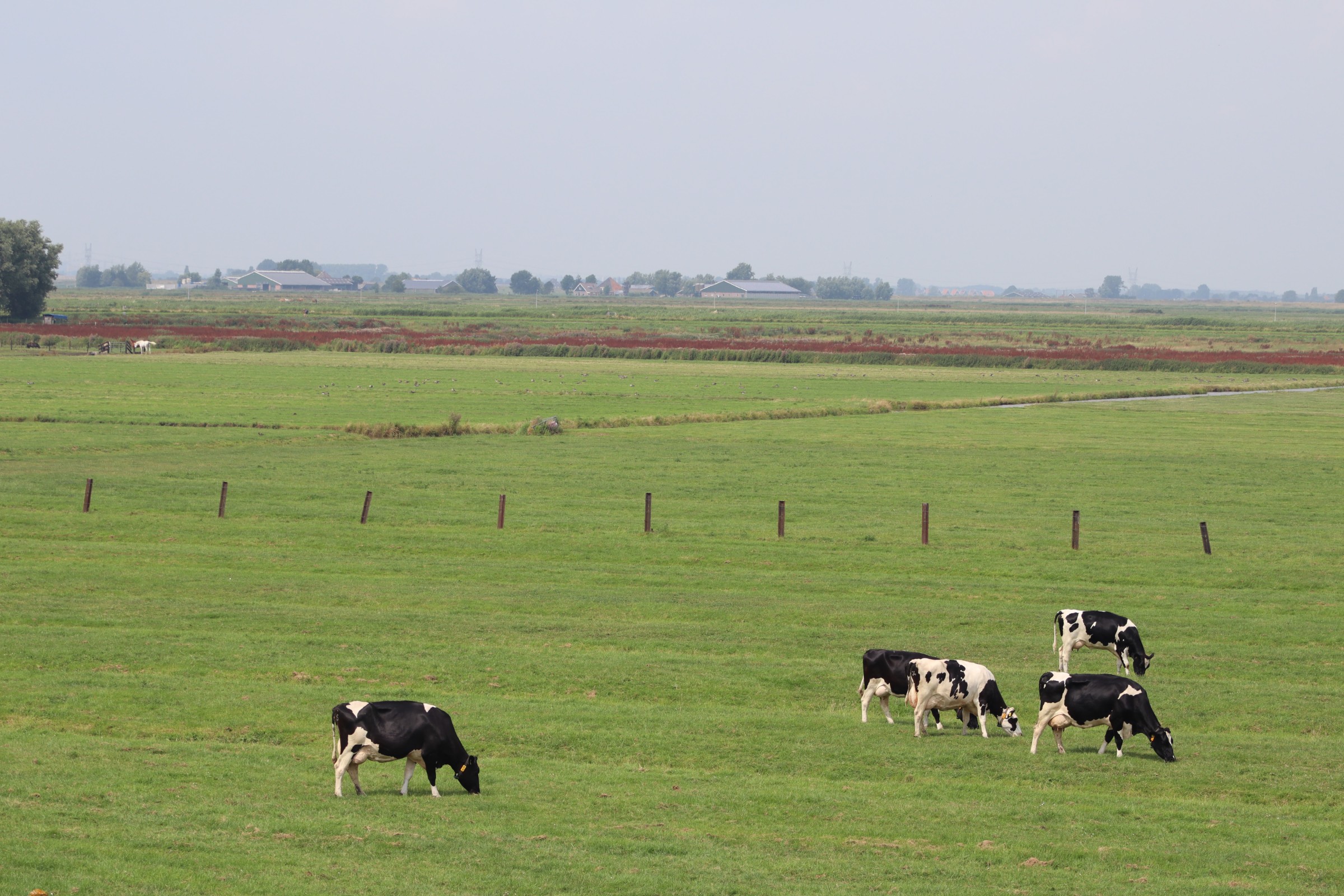
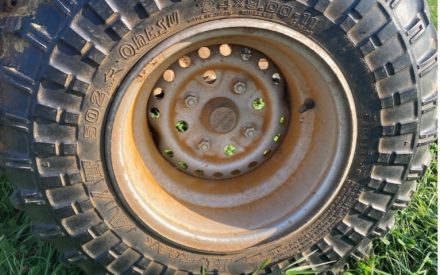 Managing Rust in Cool Season Pastures
Managing Rust in Cool Season Pastures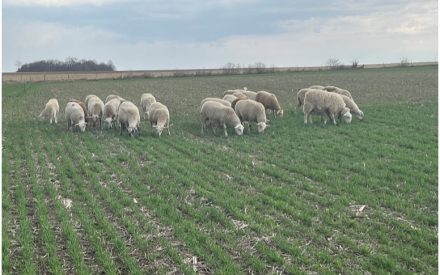 Grazing Cover Crops and Annual Forages
Grazing Cover Crops and Annual Forages Grazing to Protect Surface Water: Considering critical and sensitive areas
Grazing to Protect Surface Water: Considering critical and sensitive areas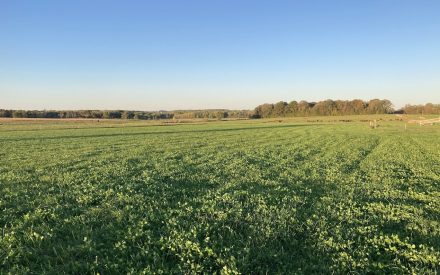 Research Brief: Interseeding legumes into grass pastures
Research Brief: Interseeding legumes into grass pastures


